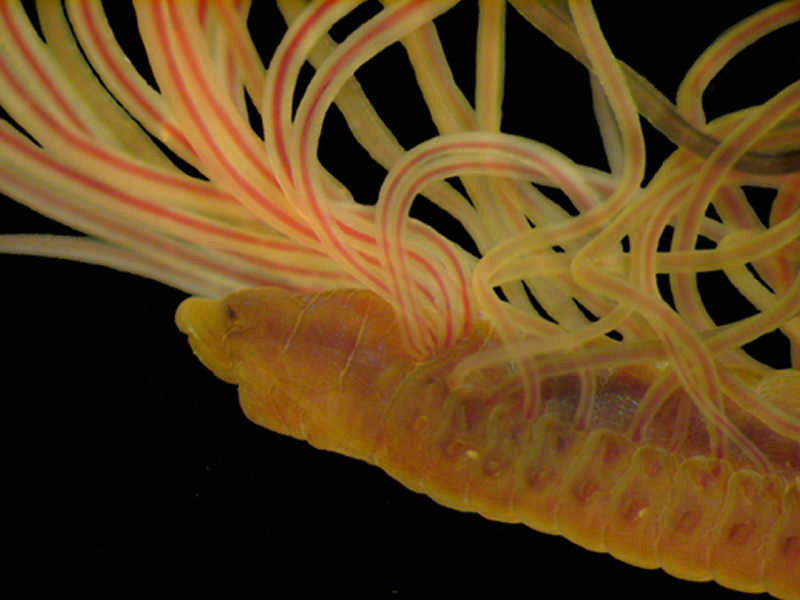Cirratulus cirratus has a long, slender, orange, pinkish or brownish-red body, with 75 to 130 segments, and can reach 12 cm in length. The head is a blunt cone with a row of 4 to 8 large black eyes either side that may meet on top of the head. There are two groups of up to 8 feeding tentacles on the first segment. Pairs of long slender gills arise at intervals from the whole length of the body and these appear as a mass of reddish threads when the worm is buried.



In Northumberland it is the dominant crevice organism on rocky shores between low and high water neaps. Cirratulus cirratus has been described as an opportunistic deposit feeder that is characteristic of areas of organic enrichment. Cirratulus cirratus is mostly intertidal but is sometimes found subtidally (up to 50 m depth off the Devon coast).

| hylum | Annelida | Segmented worms e.g. ragworms, tubeworms, fanworms and spoon worms |
| Class | Polychaeta | Bristleworms, e.g. ragworms, scaleworms, paddleworms, fanworms, tubeworms and spoon worms |
| Order | Terebellida | |
| Family | Cirratulidae | |
| Genus | Cirratulus |
No comments:
Post a Comment